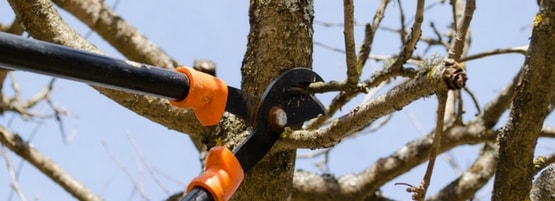March Northern Garden Checklist

Starting Seeds Indoors:
- Continue planting flower and vegetable seeds indoors. Follow packet directions for planting information and timing. Water often enough to keep the soil moist and fertilize with a dilute solution of fertilizer as directed. Visit the February checklist for instructions on starting seeds.
Bulbs:
- Start canna, dahlia, tuberous begonias and other tender bulbs indoors the end of February through mid-March for earlier flowering in the garden.
- Fertilize established bulb plantings (outdoors) with Milorganite® once the soil has thawed and the plants begin to grow. Fertilizing before flowers emerge stimulates leaf growth, which feeds the bulb after flowering.
Early Spring Pruning:
- Summer and fall blooming shrubs: prune now until growth begins. Late winter/early spring pruning will not interfere with summer flowering and allows the plants to recover quickly.
- Wait until after flowering to prune lilacs, forsythia and other spring flowering shrubs.
- Start thinning and pruning raspberry plantings as the snow begins to recede. Remove any old stems that bore fruit last summer. Leave 4 healthy canes per foot or 6 to 8 per hill.
- The best time to prune deciduous plants is just prior to new growth when plants are dormant. It’s also easier to see the shape when their foliage is gone.
- For more pruning information visit the February checklist.
Landscape Care
- Start removing winter protection when temperatures begin hovering above freezing for a week or new growth appears. Don’t leave winter coverings on too long or the covered plants will develop spindly growth and be at greater risk for disease.
- Watch for frost heaving in the garden caused by freezing and thawing of the soil throughout the winter. This causes the soil to shift and can push some plants and bulbs out of the soil. Reset plants and bulbs as needed.
- Promote growth on trees and shrubs with spring fertilization of Milorganite.
- Check dogwoods for signs of golden canker. This fungal disease is common on dogwoods that have suffered heat and drought stress in summer. The twigs turn gold and die. Prune out infected stems. Disinfect tools between each cut.
- Examine trees and shrubs for tent caterpillars, gypsy and tussock moth egg masses, black knot and other cankers. Remove and destroy egg masses of harmful insects and prune out cankers as found. Disinfect tools between cuts to reduce the spread of disease.
- It’s time to get busy cleaning up the garden. Remove any stems and seedpods left standing for winter and add them to your compost pile.
- Cut ornamental grasses back to 4 to 6 inches before growth begins. Bind top growth of larger grasses with twine to make pruning and removal easier.
- Prune Russian sage and butterfly bushes down to 6 inches above the soil surface. Use a lopper or hand pruners to cut stems above an outward facing bud.
- Start testing the soil as the snow melts and soil has thawed. Test the soil in new gardens, problem areas or to ensure you are applying the right amount and type of fertilizer to your garden. Contact your local Extension service for soil testing information.
- Take advantage of any sunny, snow-free days and locate areas suitable for adding new planting beds. Mark beds and begin preparation as soon as the soil can be worked.
Spring Planting
- Plant bare-root trees and shrubs as soon as possible and when the plants are still dormant for greatest success.
- Late winter through early spring is a good time to transplant trees and shrubs. Start planting when the ground thaws and soil is moist.

